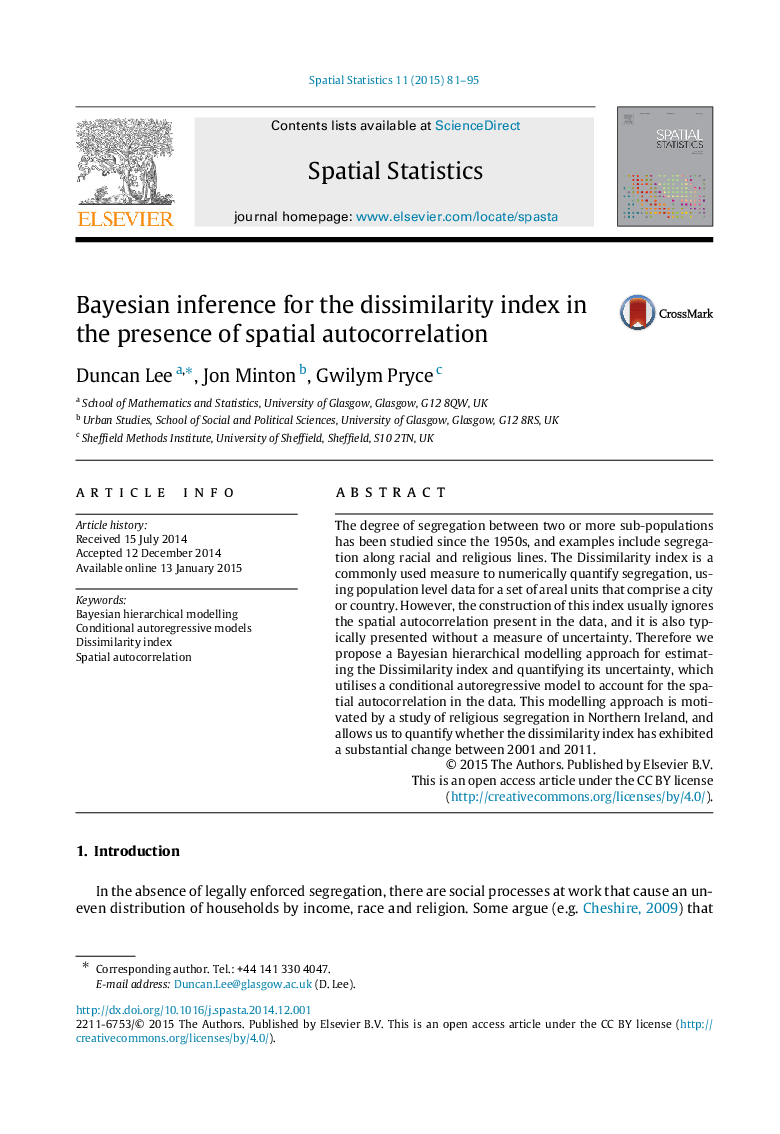| Article ID | Journal | Published Year | Pages | File Type |
|---|---|---|---|---|
| 7496605 | Spatial Statistics | 2015 | 15 Pages |
Abstract
The degree of segregation between two or more sub-populations has been studied since the 1950s, and examples include segregation along racial and religious lines. The Dissimilarity index is a commonly used measure to numerically quantify segregation, using population level data for a set of areal units that comprise a city or country. However, the construction of this index usually ignores the spatial autocorrelation present in the data, and it is also typically presented without a measure of uncertainty. Therefore we propose a Bayesian hierarchical modelling approach for estimating the Dissimilarity index and quantifying its uncertainty, which utilises a conditional autoregressive model to account for the spatial autocorrelation in the data. This modelling approach is motivated by a study of religious segregation in Northern Ireland, and allows us to quantify whether the dissimilarity index has exhibited a substantial change between 2001 and 2011.
Keywords
Related Topics
Physical Sciences and Engineering
Earth and Planetary Sciences
Earth and Planetary Sciences (General)
Authors
Duncan Lee, Jon Minton, Gwilym Pryce,
